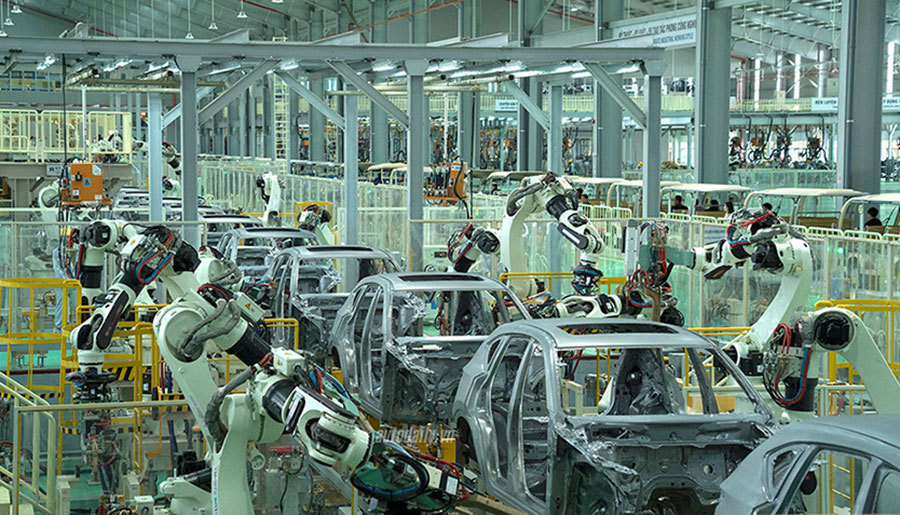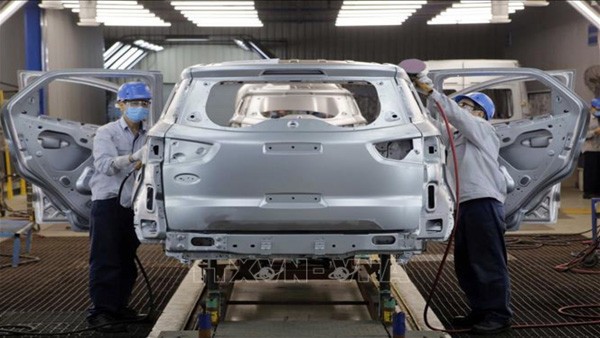NEW RULES ON ANNULLING AUTOMOBILE LOCALIZATION RATE – CIRCULAR 11
NEW RULES ON ANNULLING AUTOMOBILE LOCALIZATION RATE – CIRCULAR 11
Effective as of October 1, 2022, Vietnam has nullified regulations regarding the method of determining the localization rate for automobiles after nearly 20 years of application. The Ministry of Science and Technology (“MoST”) has issued Circular 11/2022/TT-BKHCN annulling 3 documents including, Decision No. 28/2004/QD-BKHCN dated 1st October 2004 (“Decision 28”), Decision No. 05/2005/QD-BKHCN dated 11th May 2005 and Circular No. 05/2012/TT-BKHCN dated 12th March 2012.

- What is the automobile localization rate?
Under Article 2 (3) of Decision 28 stipulating, the localization rate of an automobile is the number of points of localized components compared to the total number of points of a complete car. The determination of the car localization rate is the basis for determining the discrete level of components to satisfy the preferential tax rate. This means sub-dividing the set of imported components and trying to put Vietnamese-made parts into that component cluster to separate and support domestic production. Therefore, the parts must be discrete and listed as hundreds of parts. The localization rate will be scored based on all components.
According to the Ministry of Industry and Trade (“MOIT”), in fact, the policy of encouraging support according to the localization rate for auto components has not yet been enjoyed by any enterprises under this policy.
Therefore, in a recent document sent to the MoST, leaders of the MOIT said that the current method of determining the localization rate does not fully reflect the value and technological content of car components in the building of a complete car.
- Meaning of nullifying the method of determining the localization rate for automobiles.
With the current localization rate calculation, it is difficult for Vietnam to produce high-quality cars. This is because the calculation underestimates the important parts of the automobile, and the unimportant parts are calculated at a high rate. Changing the way to calculate the localization rate is also a way to place higher requirements on car manufacturers so that manufacturers can improve product quality with the most advanced technology.
On the other hand, the annulment of the above regulations is not only to ensure the consistency of the legal document system but also to meet practical needs, in accordance with common regional and international standards.
With growing technology trends, the features and components of an automobile are also increasingly innovative and modern and account for a large proportion of the overall value of the vehicle. Maintaining this regulation will cause many difficulties in determining the localization rate of automobiles.
According to the Vietnam Association of Mechanical Enterprises (VAMI), the removal of regulations on how to calculate the auto localization rate will help improve the business investment environment and create favorable conditions for manufacturing enterprises, domestic automobile assembly maintains production in the context of fierce competition with CBU automobiles imported from ASEAN with the tax rate of 0% from 2018.
- Problems which may arise from nullifying the method of determining the localization rate for automobiles.

Currently, the documents regulating the method of determining the localization rate for automobile are no longer suitable with the development reality of the automobile industry, because Vietnam still uses the method of calculating the localization ratio. According to clusters of domestically produced parts, while ASEAN countries calculate according to the total value of each part combined, to enjoy tax incentives under the ASEAN Trade in Goods Agreement (ATIGA).In addition, the regulation on the discrete level of imported auto parts is the basis for the implementation of the tax incentive program for the production and assembly of automobile which has been implemented stably from 2018 to present. This has contributed to encouraging domestic automobile assembly and manufacturing enterprises to increase the localization rate, improve competitiveness with imported automobiles, promote the domestic automobile industry to develop according to the Party’s orientation and the State, creating favorable conditions to attract investment especially from FDI enterprises. The annulment of this regulation will leave a legal gap for the implementation of the preferential import tax policy, Vietnam needs to issue new legal regulations to comply with signed international agreements to ensure the interests of current and future automobile manufacturers.










